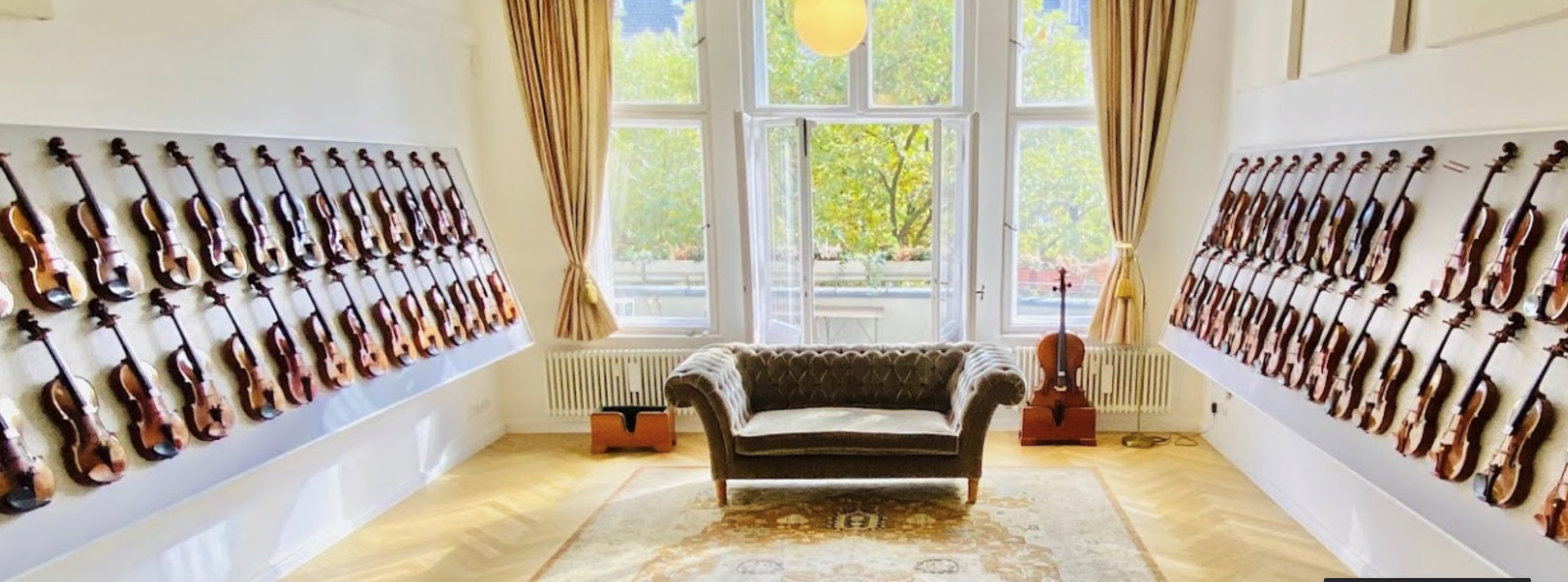Highest Pedigree Yields No High Bids for Cello
New York Times, November 2, 2008
By Kathryn ShattuckIt was a remarkable cello, with an equally remarkable pedigree, and by all accounts it was primed to draw a record price as serious bidding began Friday morning on the Web site of Tarisio (tarisio.com), auctioneers of fine stringed instruments and bows. Sure enough, the cello, made in 1717 by Antonio Stradivari and named after Amaryllis Fleming, the half sister of Ian Fleming, quickly attracted a record bid of $1.35 million. But then, silence.
As the minutes ticked by Jason Price, a partner in the company, refreshed the screen of his Mac PowerBook and fidgeted with his iPhone, his hopes of a higher figure — or better yet, a bidding war — slowly evaporating. Even more nerve-racking, the one bid in hand, about $600,000 higher than the record paid for another Stradivari cello sold by Sotheby’s in 1988, failed to meet the reserve price, which was kept confidential by Tarisio and the Fleming family. The cello had been valued at $1.48 million to $1.97 million.
“We’re down in the zero-second range,” Mr. Price, 32, said just before the bidding closed at 1 p.m. “We’re getting closer.”
At the stroke of 1 p.m., the words “bidding has ended” flashed on his screen. “Now we begin,” he said, closing his Manhattan office on West 54th Street to visitors and initiating a series of phone calls he hoped would result in a postauction agreement between the bidder and the Flemings. As of Sunday afternoon, negotiations were continuing.
“I think we are in uncharted territory with our economy, and I think that puts the fear of God into a lot of people who a year ago weren’t fearful,” Mr. Price speculated later as he packed for an evening flight to London to return the Fleming, which had its own ticket and seat.
Made in Cremona, Italy, the instrument is one of only 60 or so Stradivari cellos in existence. It is patterned on the B-form like the Davidoff, which Jacqueline du Pré bequeathed to Yo-Yo Ma, and the Duport, played by Mstislav Rostropovich. Ms. Fleming, who died in 1999, was the daughter of the painter Augustus John and apparently had both a passion for Bach and a reputation as a femme fatale. She bought the cello in the 1960s and used it to perform and teach. (Her students included Raphael Wallfisch.)
The Fleming’s value might have increased five-fold had the cello’s top and head not been replaced in the mid-18th-century by the Spanish luthier José Contreras, said Simon Morris, a director of J & A Beare, the company that would certify the cello upon its sale.
“I think it’s just very unfortunate timing,” said Mark Messenger, head of strings at the Royal College of Music in London, where Ms. Fleming had studied and taught, and which is to benefit from the sale. “We couldn’t have foreseen that people would have been so reluctant to invest money.”
Despite the failure to find a buyer, Mr. Morris called the market for antique stringed instruments “a fantastic investment.”
“Nobody needs a calf in a tank of formaldehyde for £8 million, but if you think you can buy a violin by the best craftsman that ever lived, it looks pretty reasonable,” he said, referring to Damien Hirst’s “Golden Calf,” which sold in September at Sotheby’s for $18.6 million.
For decades investors have been tempted by the creations of master Italian craftsmen like Stradivari, Giuseppe Guarneri and Nicolò Amati, instruments whose escalating value is fueled by craftsmanship that can’t be replicated, and myth — was the instrument heard by Mozart or Beethoven? — scarcity and need. Until Friday, the allure only seemed to be increasing.
In 2005 Maxim Viktorov, a Russian lawyer, paid $1.05 million for a Bergonzi violin made around 1720 and once owned by Paganini; earlier this year he paid $3.9 million for a 1741 Guarnerius, after which he flew the violinist Pinchas Zukerman to Moscow, where the violin was played publicly for the first time in more than 70 years. More recently Ian Stoutzker, a London banker and philanthropist, is said to have consigned his own 1741 Guarnerius for a reported $20 million to the Chicago dealer Geoffrey Fushi, of Bein & Fushi.
Tarisio was founded in 1999 by Mr. Price, who studied cello and later violin making in Cremona and Parma; Dmitry Gindin, a London-based dealer and author; and Christopher Reuning, a Boston dealer and restorer. In the eBay era, the partners hoped to take advantage of the ease and privacy of online bidding while providing the services — viewings, valuations and guarantees — of brick-and-mortar auction houses. In 2003 they were awarded the sale of the Isaac Stern estate, which grossed $3.3 million. Last year Tarisio, which also brokers private sales, did close to $12 million in gross sales, Mr. Price said.
After months of showcasing the Fleming’s luscious tone and vibrant beauty at viewings in London, New York, Boston and Cremona, Mr. Price spent the weekend “trying to put people in touch and make things happen” on the cello’s behalf, though he said there was no rush.
“I think it takes a magical relationship between an instrument and the right person,” he said with a mixture of wistfulness and pragmatism. “It’s like matchmaking. You can’t always be sure to find your match.”


